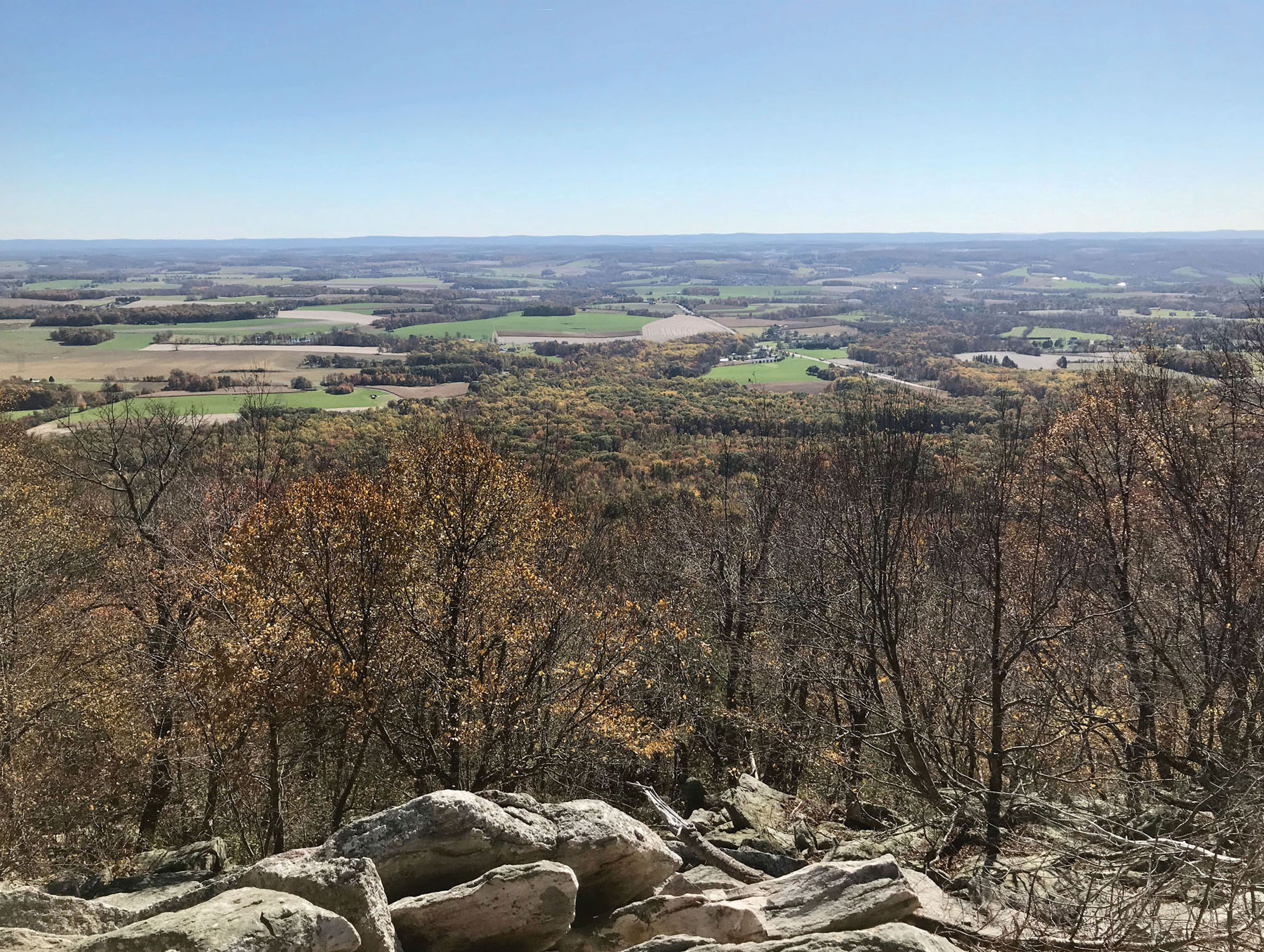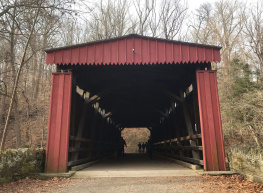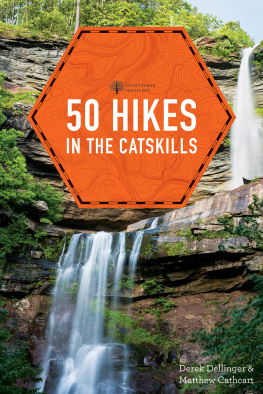Matthew Cathcart - 50 Hikes in Pennsylvania
Here you can read online Matthew Cathcart - 50 Hikes in Pennsylvania full text of the book (entire story) in english for free. Download pdf and epub, get meaning, cover and reviews about this ebook. year: 2021, publisher: Countryman Press, genre: Home and family. Description of the work, (preface) as well as reviews are available. Best literature library LitArk.com created for fans of good reading and offers a wide selection of genres:
Romance novel
Science fiction
Adventure
Detective
Science
History
Home and family
Prose
Art
Politics
Computer
Non-fiction
Religion
Business
Children
Humor
Choose a favorite category and find really read worthwhile books. Enjoy immersion in the world of imagination, feel the emotions of the characters or learn something new for yourself, make an fascinating discovery.
- Book:50 Hikes in Pennsylvania
- Author:
- Publisher:Countryman Press
- Genre:
- Year:2021
- Rating:5 / 5
- Favourites:Add to favourites
- Your mark:
- 100
- 1
- 2
- 3
- 4
- 5
50 Hikes in Pennsylvania: summary, description and annotation
We offer to read an annotation, description, summary or preface (depends on what the author of the book "50 Hikes in Pennsylvania" wrote himself). If you haven't found the necessary information about the book — write in the comments, we will try to find it.
50 Hikes in Pennsylvania — read online for free the complete book (whole text) full work
Below is the text of the book, divided by pages. System saving the place of the last page read, allows you to conveniently read the book "50 Hikes in Pennsylvania" online for free, without having to search again every time where you left off. Put a bookmark, and you can go to the page where you finished reading at any time.
Font size:
Interval:
Bookmark:

OTHER BOOKS IN THE 50 HIKES SERIES
50 Hikes on Michigan & Wisconsins North Country Trail
50 Hikes in the North Georgia Mountains
50 Hikes in Northern New Mexico
50 Hikes in Ohio
50 Hikes in Orange County
50 Hikes in the Ozarks
50 Hikes in South Carolina
50 Hikes in the Upper Hudson Valley
50 Hikes in Wisconsin
50 Hikes in the Berkshire Hills
50 Hikes in Alaskas Kenai Peninsula
50 Hikes in Coastal and Inland Maine
50 Hikes in Kentucky
50 Hikes in the Catskills
50 Hikes in Connecticut
50 Hikes in Central Florida
50 Hikes in the Sierra Nevada
50 Hikes in the Carolina Mountains
50 Hikes in New Jersey
50 Hikes on Tennessees Cumberland Plateau
50 Hikes in Eastern Massachusetts
50 Hikes around Anchorage
50 Hikes in the Lower Hudson Valley
50 Hikes in Michigan
50 Hikes in the Adirondack Mountains

AN INVITATION TO THE READER
Over time trails can be rerouted and signs and landmarks altered. If you find that changes have occurred on the routes described in this book, please let us know so that corrections may be made in future editions. The author and publisher also welcome other comments and suggestions.
Address all correspondence to:
Editor, 50 Hikes Series
The Countryman Press
500 Fifth Avenue
New York, NY 10110
Copyright 2021 by The Countryman Press
All rights reserved
For information about permission to reproduce selections from this book, write to Permissions, The Countryman Press, 500 Fifth Avenue, New York, NY 10110
For information about special discounts for bulk purchases, please contact W. W. Norton Special Sales at specialsales@wwnorton.com or 800-233-4830
Series cover design by Steve Attardo
Front cover photograph: Robert K. Olejniczak/Alamy Stock Photo
Back cover photograph by Matthew Cathcart
Series book design by Chris Welch
Maps by Michael Borop (sitesatlas.com)
Production manager: Gwen Cullen
Library of Congress Cataloging-in-Publication Data is available
The Countryman Press
www.countrymanpress.com
A division of W. W. Norton & Company, Inc.
500 Fifth Avenue, New York, NY 10110
www.wwnorton.com
978-1-68268-523-5 (pbk.)
978-1-68268-524-2 (ebk.)

Contents


N ope, it still moves a little bit. Well have to dig it out and try again.
I leaned on my pry bar, exhausted. I let out a defeated sigh, hanging my head for a brief moment. I had been watching a retired man stand on a rock the size of a minifridge that sat in an 8-inch-deep hole. The blazing sun that beat down on the leaves warmed the humid forest air below the dense canopy, making it feel more like the middle of July than early September. Sweat rolled down my face and dripped off my chin. My safety glasses fogged up unceremoniously. Despite the heat, I was dressed in long pants, plastic catcher-style shin guards, thick leather work gloves, and a hard hat. It was 2013 and my wife and I were participating in an Appalachian Trail Crew, a volunteer-based workforce that performs manual labor with primitive hand tools, refurbishing and repairing the tread of the historic 2,000-mile footpath that runs from Georgia to Maine. My wife had discovered the opportunity while browsing online and we both decided that it seemed like a fun way to give back. At that moment, however, as I stood in the half-sun of a September afternoon, tired, hungry, sticky, filthy, and frustrated, fun seemed like a foreign concept.

GAZING OVER THE VALLEY FROM ATOP THE KNIFES EDGE
The man I had been watching was my crew leader. The other volunteers and I had just spent over an hour leveraging the massive rock into and then back out of the shallow pit, trying over and over again to dig a hole that fit the uneven bottom side of the rock snugly, so it would not move. Seemingly in spite of this hard work, our crew leader was trying with all his might to wiggle the 400-pound rock. It moved no more than the width of two nickels.
The volunteers went back to the task at hand, reluctant but determined, while our crew leader, confident in our abilities, started scoping out the nearby forest for other rocks that might work well as stepping stones. We were working on a creekside section of trail near Eckville, Pennsylvania, that was prone to flooding and the subsequent erosion that went along with it. The work we were doing would provide hikers with a dry alternative to slogging through the mud, and this section would now be resistant to flowing floodwaters. With any luck, the stones we dug into the ground would not need to be replaced for 10 or 15, maybe 20 years. The thought of building such a long-standing structure with a few hand tools, the collective brute strength of a few sweaty individuals, and (quite literally) some grit was immensely satisfying. But to stand the test of time, the stepping stones had to be held perfectly in place by the ground around them. Hikers carrying heavy packs generate a lot of force when they traipse downhill, and the sloping trail that led down to the creek would see thousands of visitors over the years. If it wasnt set perfectly in place, the stepping stone would wiggle more and more every year, slowly enlarging the hole it sat in. After that, water would be able to seep into any loose space around the rock, and the freeze-thaw cycle that Pennsylvania experiences in the spring and fall would lift the stepping stone out of place and blow out the trail.
As I worked I reflected on several unavoidable truths. The eroding of the trail was inevitable of course, as the forces of nature and the pounding of footsteps took their toll on the trail. For a trail to have any staying power, it would need to be maintained or else it would fade into the ether, under duff and brush, or fall apart due to overuse, essentially crumbling under the weight of its own popularity. It is easy to take a good hiking trail for granted, I surmised. Anyone who has been hiking is familiar with the experience: You show up at the trailhead, exit your vehicle, and instantly step into the woods on winding trails that appear to have existed since time immemorial. Sometimes, where many trails exist, the path intersects with others, which forces hikers to make decisions about which way to go. Other times, as on large stretches of the Appalachian Trail, the way is fairly straightforward and the only options that exist are to go forward or turn around. Despite how they differ in philosophy, both scenarios occur seemingly of their own volition, unfolding with no effort or foresight required of those who choose to enjoy them. The Appalachian Trail, like all footpaths through the deep, dark woods, is inherently fragile. It is held together largely by the efforts of public servants who work tirelessly to protect the remaining undeveloped land we still have and by the never-ending labor of hardy volunteers who apparently get a kick out of banging rocks together to build something so rustic that it looks like it wasnt forged by human hands. Why go to such great lengths to make something so thankless, so tenuous, so extravagantly Sisyphean?
Font size:
Interval:
Bookmark:
Similar books «50 Hikes in Pennsylvania»
Look at similar books to 50 Hikes in Pennsylvania. We have selected literature similar in name and meaning in the hope of providing readers with more options to find new, interesting, not yet read works.
Discussion, reviews of the book 50 Hikes in Pennsylvania and just readers' own opinions. Leave your comments, write what you think about the work, its meaning or the main characters. Specify what exactly you liked and what you didn't like, and why you think so.











